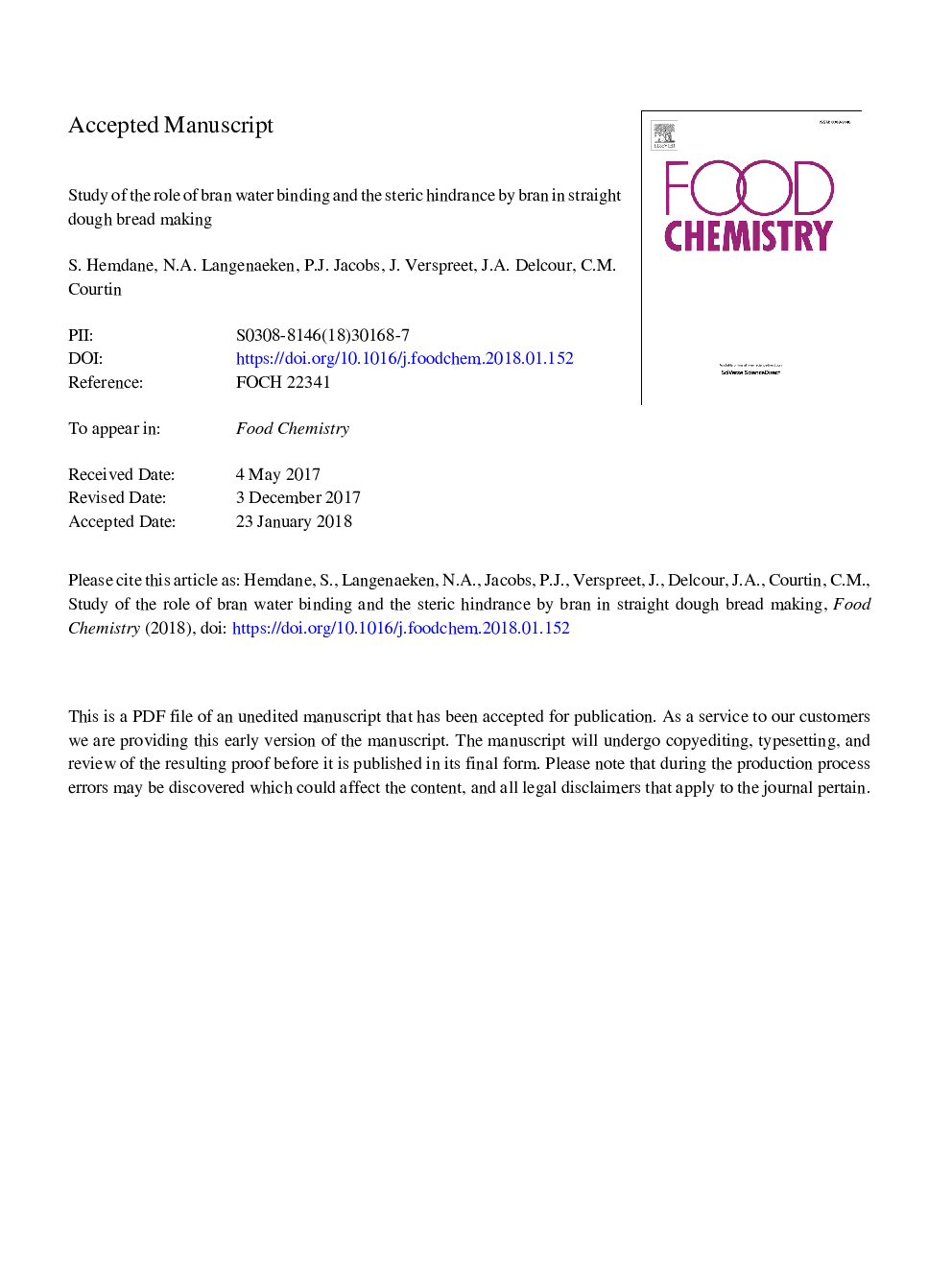| Article ID | Journal | Published Year | Pages | File Type |
|---|---|---|---|---|
| 7585625 | Food Chemistry | 2018 | 29 Pages |
Abstract
This study investigates the effect of the physical presence and water binding of wheat bran during bread making, and the possible mechanisms behind this effect. Regular bran, pericarp-enriched bran and synthetic bran-like particles with different water binding capacities and particle sizes were used. Incorporation of regular and pericarp-enriched bran in dough (15% dm) led to a lower oven rise than the control dough. Bread volumes decreased with 11% and 30%, respectively. Dough with synthetic bran, having a low water binding capacity, displayed a near to normal leavening and oven rise and resulted in a bread volume decrease of only 5% compared to the control. Particle size reduction of regular bran and synthetic bran to an average size of 200â¯Âµm did not affect final bread quality. Results indicate that water binding by bran affects bread quality the most, whereas steric hindrance by physical presence of bran particles is less determinative.
Related Topics
Physical Sciences and Engineering
Chemistry
Analytical Chemistry
Authors
S. Hemdane, N.A. Langenaeken, P.J. Jacobs, J. Verspreet, J.A. Delcour, C.M. Courtin,
